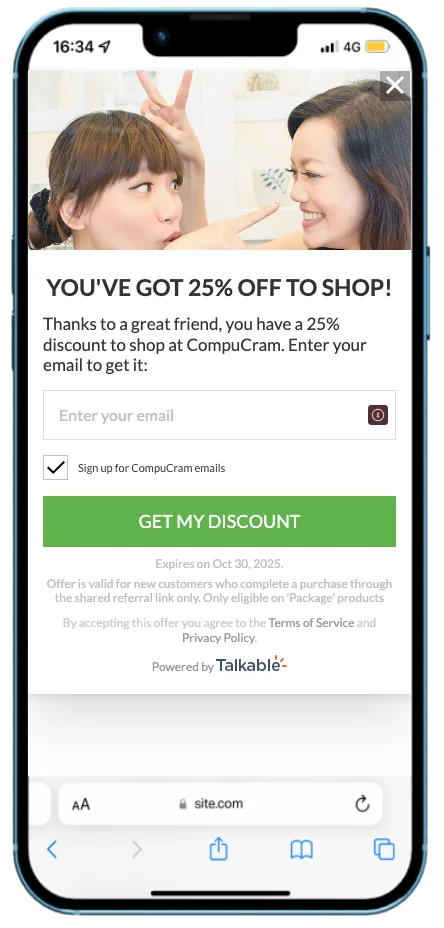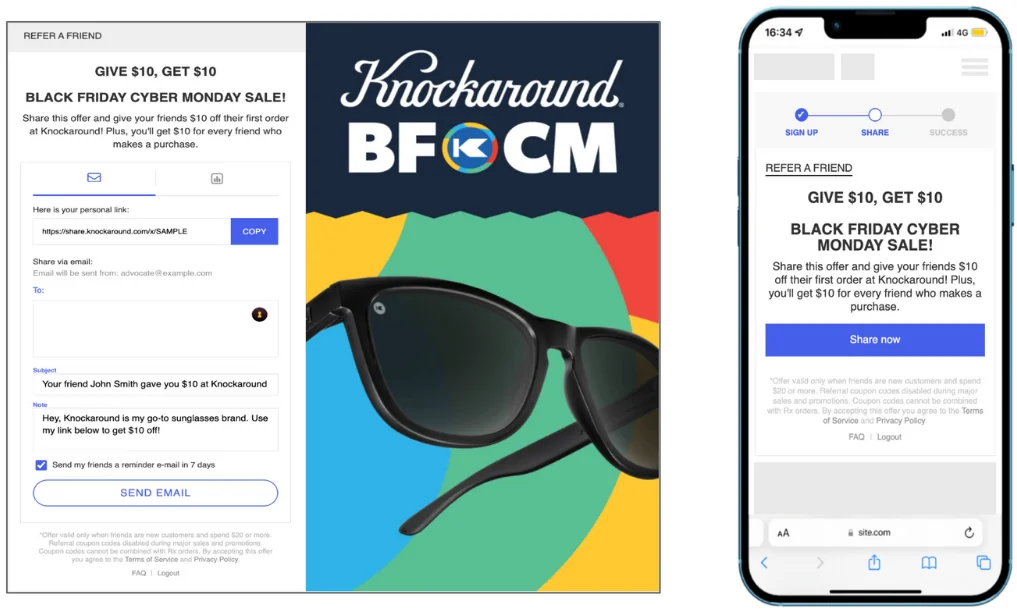
Referral marketing is typically seen as a top-of-funnel growth tool. Get more users. Lower cost per acquisition. Increase reach. But for eLearning brands, referrals can also be a powerful lever at the other end of the journey. They help drive course completion, increase engagement, and improve long-term retention.
This is not theory. Leading platforms are already using referral mechanics to reward behavior, reduce drop-off, and build peer-driven motivation. If you want your learners to finish what they start and actively promote your program, referrals should be part of your engagement playbook.
Here’s how it works.
The Completion Problem in eLearning
Most online courses struggle with drop-off. Self-paced programs often see fewer than 10 percent of students reach the end. Even cohort-based courses with live support see students lose steam due to time conflicts, distractions, or loss of motivation.
When a student drops out, it hurts more than just that one transaction. It reduces lifetime value, damages course credibility, and removes the chance of organic advocacy. No one recommends a course they didn’t finish.
But if you align referral mechanics with student progress, you can change the outcome.
How Referrals Can Increase Course Completion
- They create shared accountability
When someone refers a friend to take the course with them, they are more likely to finish. The relationship builds peer motivation. They check in on each other. They feel a sense of shared progress. This turns a solo experience into a joint mission. - They turn milestones into social moments
Completing a module, passing a quiz, or hitting a streak can become a reason to refer. If students are rewarded for sharing their achievements, they are more likely to stick with the program and invite others to join. - They reward progress, not just enrollment
Instead of only offering rewards when a new student signs up, you can tie referral incentives to both the inviter and the invitee completing specific milestones. This encourages both parties to stay engaged. - They signal value through behavior
When a student refers someone, it is a form of commitment. It shows belief in the course. That act of recommendation often reinforces their own resolve to follow through and finish what they started.
Referral Structures That Promote Completion
You do not need to reinvent your course. Just integrate referral incentives with the natural learning journey.
Progress-based rewards
Offer bonuses or unlocks when students complete sections and refer others. For example: “Finish Module 2 and refer a peer to earn a free coaching session.”
Referral pairs
Encourage students to join in pairs or small groups. Offer both people an incentive if they complete the course together. Think of it as a buddy system for digital education.
Streak sharing
If your platform tracks daily or weekly engagement, allow students to share progress with friends and reward them for spreading motivation. Public progress can reinforce personal commitment.
Certificate-linked referrals
After completion, reward students who refer others within 30 days. This keeps them connected to the brand and encourages them to advocate while the success is fresh.
Engagement Beyond the Initial Course
Many eLearning brands focus on the first sale. But completion often drives the second one. A student who finishes a course is more likely to buy the next tier, sign up for mentoring, or subscribe to a membership.
Referrals tied to completion can become the bridge. When a student gets rewarded for finishing and referring, and then sees a friend start the journey, they often feel compelled to keep learning as well.
This feedback loop strengthens retention, increases customer lifetime value, and builds a stronger sense of community around your program.
The Wrap-up
Referrals are not just about new leads. They can be used to motivate existing students, boost completion rates, and create a more engaging learning experience.
By embedding referral opportunities inside the course journey, and linking rewards to meaningful milestones, you create a system where success breeds success. Students who refer feel proud. Those who are referred feel invited. And your program grows not just in size, but in outcomes.
It is time to think of referrals as more than marketing. They are a tool for learning.



